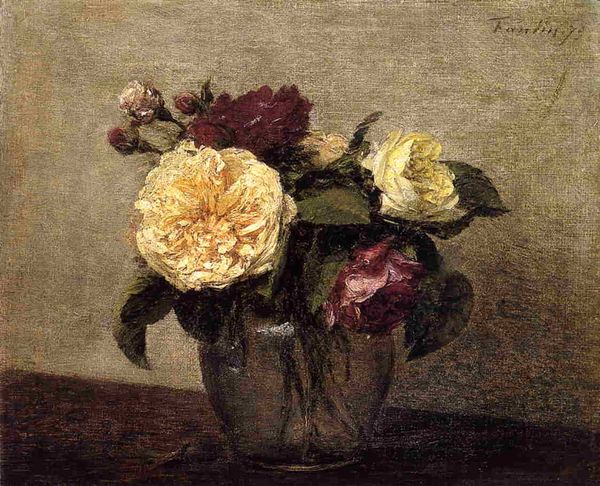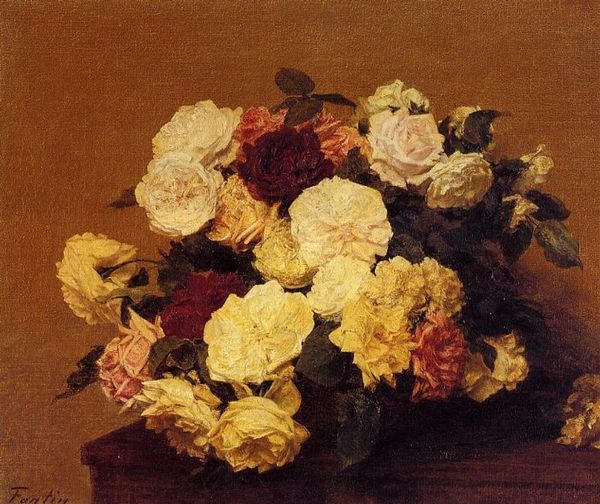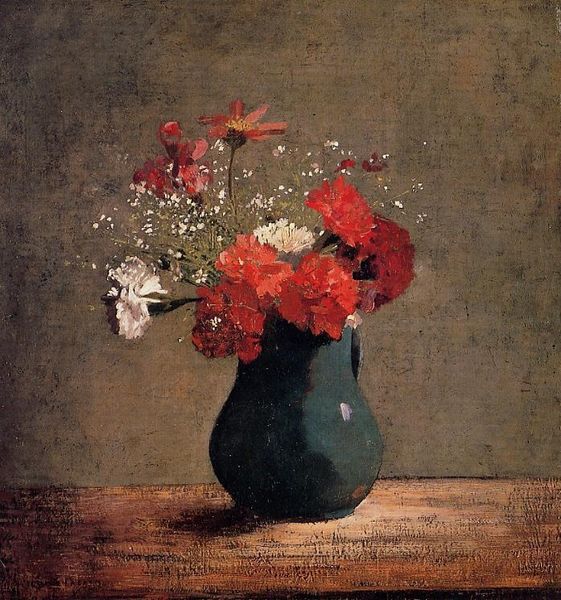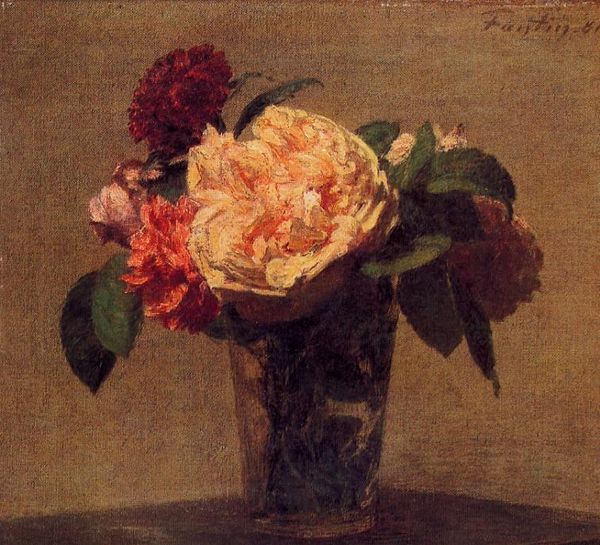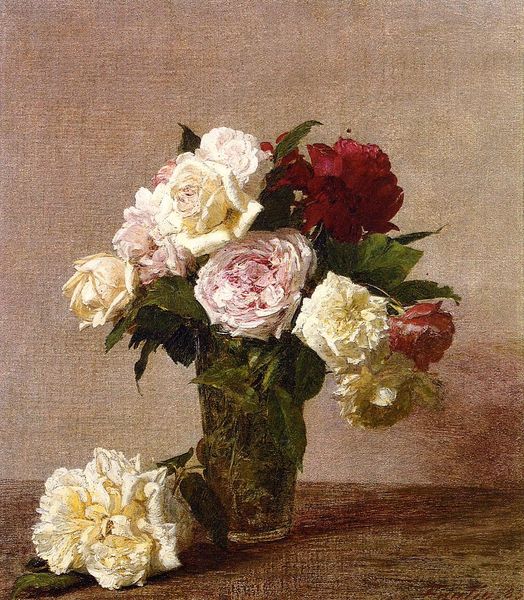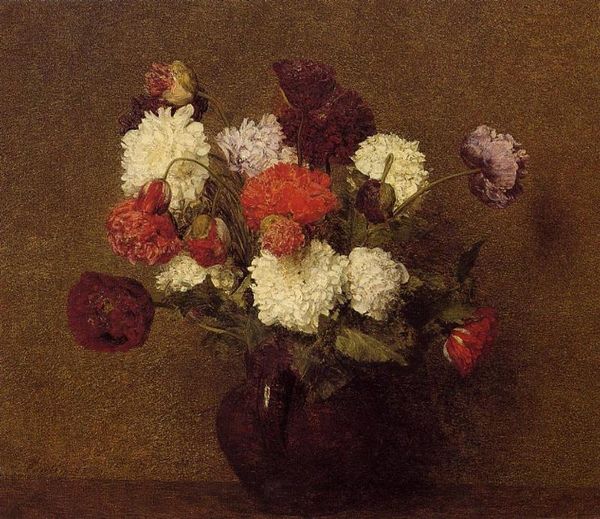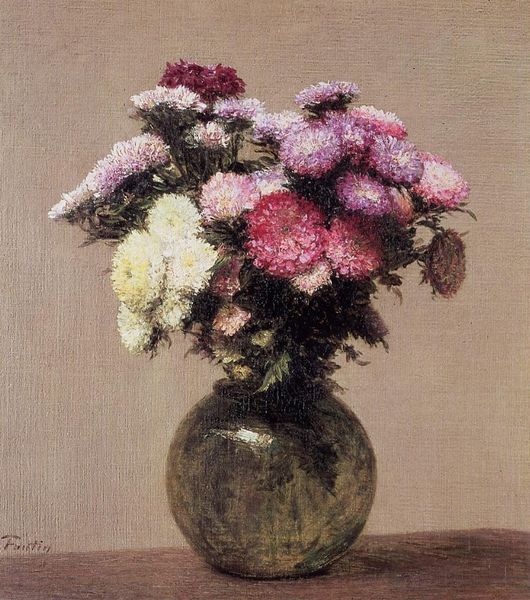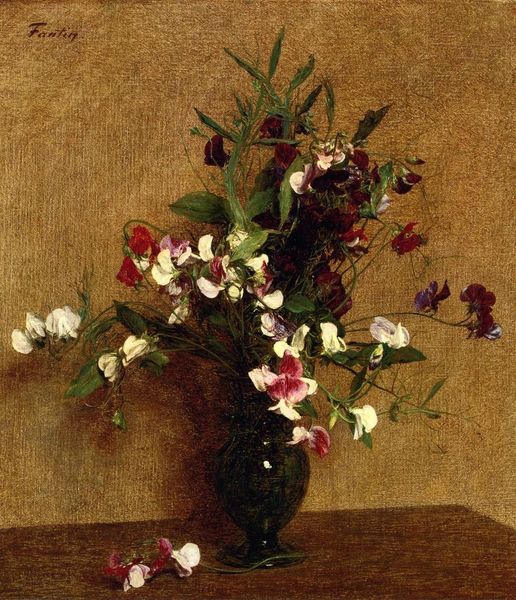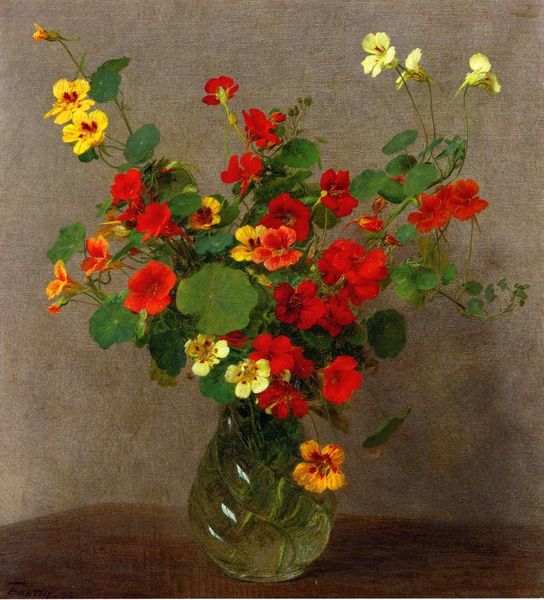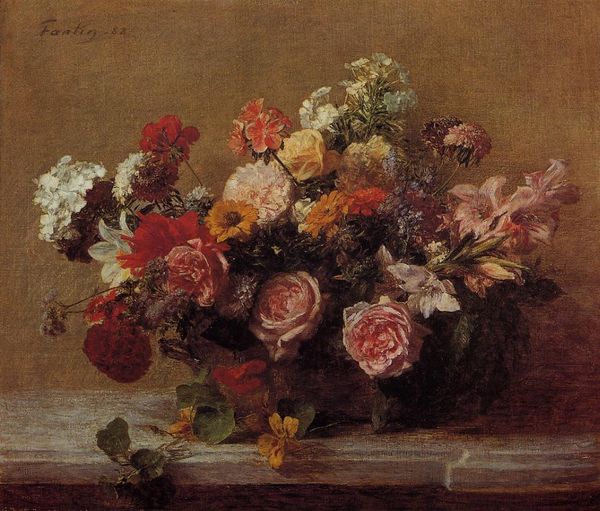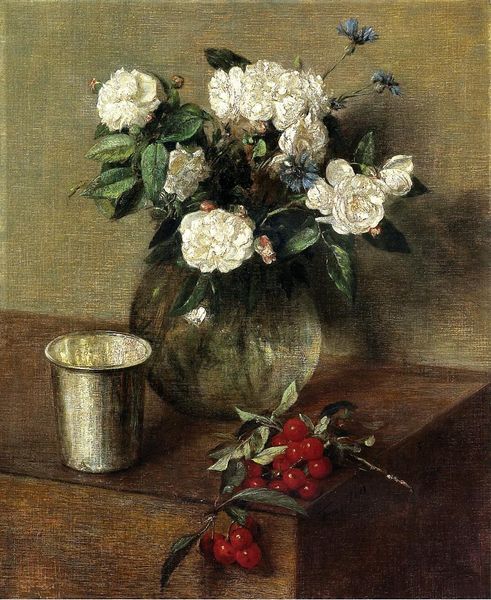
Copyright: Public domain
Editor: So, we have Henri Fantin-Latour's "Dark Roses on Light Background," painted in 1891, rendered in oil. I'm immediately struck by the intensity of the red; it's almost funereal. What do you see in this piece? Curator: It's interesting you pick up on the color. Considering Fantin-Latour’s position within late 19th-century art, operating between Romanticism and Realism, this isn’t just about capturing botanical accuracy. These aren't vibrant, life-affirming roses. These are "dark" roses, placed against a muted ground, their darkness speaking to a specific kind of cultural symbolism prevalent at the time. Think about the rise of decadent literature and the obsession with mortality that seeped into the art of the period. Editor: So, it’s less about beauty and more about… societal anxieties? Curator: Exactly! The Victorians were notoriously preoccupied with death, mourning, and hidden meanings. Roses, while symbols of love, also represent the fleeting nature of beauty and life. These "dark roses" evoke a sense of melancholic beauty. Considering his position and relationships with other artists at that time, like Whistler and the burgeoning Symbolist movement, can give more dimension to this choice. Do you think the impasto brushstrokes add to this feeling? Editor: I do! It's like the roses are almost dissolving, echoing that fragility you mentioned. The way he layers the paint definitely reinforces the sense of decay. Curator: Yes! And within this context, the light background almost accentuates the darkness. It's a visual push and pull, isn’t it? These elements ask us to confront uncomfortable truths. Editor: I never thought about flower paintings in terms of social commentary. I guess art really is more than just what meets the eye. Curator: Absolutely! By questioning what is seemingly conventional, we open avenues to broader discussions about art, its context, and ultimately, its impact on society.
Comments
No comments
Be the first to comment and join the conversation on the ultimate creative platform.
